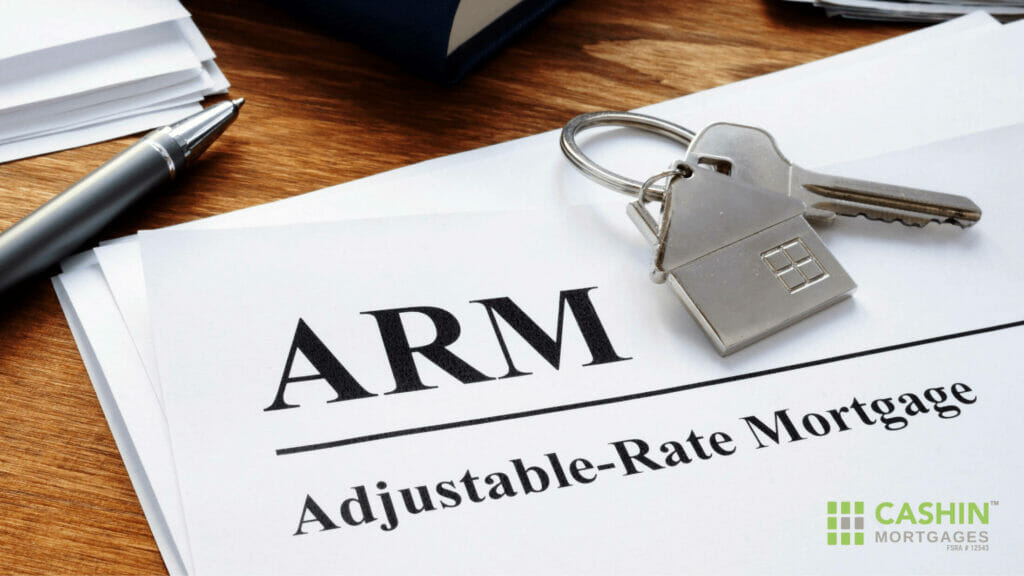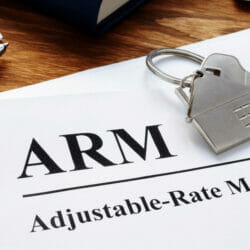
In the ever-evolving landscape of the Canadian housing market, prospective homebuyers face a crucial decision when choosing the type of mortgage that best suits their financial goals. Among the various options available, adjustable-rate mortgages have garnered attention, particularly with recent forecasts indicating a potential decline in interest rates over the medium term.
In this article, we will explore the pros and cons of adjustable-rate mortgages in the current market context, based on the Canadian mortgage interest rate forecast from 2023 to 2028.
Pros of Adjustable-Rate Mortgages
Let’s delve into the pros of adjustable-rate mortgages and explore why they are capturing the attention of homebuyers in today’s market.
Initial Lower Interest Rates
One of the most alluring features of adjustable-rate mortgages is the lower initial interest rates they offer compared to their fixed-rate counterparts. According to the forecast, variable and short- to medium-term fixed mortgage interest rates are anticipated to decline over the medium term. As a result, borrowers who opt for ARMs may secure a mortgage at a lower interest rate during the initial period. These lower rates can translate into tangible savings for borrowers, particularly in the early years of the mortgage. With lower monthly payments, homeowners may find themselves with more disposable income that can be allocated toward other financial goals or investments.
Potential Savings
The opportunity for savings is a compelling aspect of adjustable-rate mortgages. During the initial fixed-rate period, debtors can benefit from lower interest rates, leading to reduced monthly payments. This can result in significant savings, especially for those who plan to own the property for a relatively short period or expect their financial situation to improve shortly.
These early-stage savings can be strategically utilized to bolster savings accounts, invest in other assets, or pay down higher-interest debts, thereby optimizing overall financial health.
Opportunity for Rate Drops
One of the most advantageous features of adjustable-rate mortgages is their ability to adapt to changing market conditions. As the forecast predicts a potential decline in interest rates over the medium term, borrowers with ARMs may be in a prime position to benefit from these fluctuations.
Should the forecasted interest rate decline materialize, borrowers could enjoy a reduction in their monthly mortgage payments when the rates adjust downward. This flexibility to take advantage of favourable market conditions makes ARMs an attractive choice for those who believe that rates will decrease in the future.
Shorter Commitment Period
For homebuyers who envision changes in their financial situation or plan to sell their property within a few years, adjustable-rate mortgages offer a shorter commitment period. ARMs typically come with initial fixed-rate terms of 1, 2, or 3 years, allowing borrowers to enjoy the stability of a fixed rate during the specified period. With a shorter commitment period, borrowers can tailor their mortgages to align with their life plans and financial goals. This flexibility may appeal to individuals who anticipate relocations, career changes, or other life events that could impact their housing needs.
Cons of Adjustable-Rate Mortgages
As with any financial product, ARMs come with their fair share of risks and challenges. Let’s explore the drawbacks of adjustable-rate mortgages to make better decisions and navigate the housing market’s uncertainty.
Uncertainty and Risk
The first and most significant drawback of adjustable-rate mortgages lies in their inherent uncertainty. Predicting interest rates with certainty is virtually impossible, as economic conditions are subject to change. While current forecasts suggest potential rate declines, there remains the risk that rates may increase instead. A rise in interest rates could lead to higher monthly mortgage payments for borrowers with ARMs, potentially straining their financial capabilities.
The Canadian housing market is influenced by numerous factors, such as inflation, GDP growth, international trade dynamics, and geopolitical tensions. These variables are highly dynamic and subject to change, making it challenging to accurately predict interest rate movements.
Lack of Stability
Unlike fixed-rate mortgages, where borrowers enjoy stable monthly payments throughout the loan term, ARMs offer no such predictability. The variability in interest rates can create uncertainty for borrowers who prefer predictable and steady financial planning.
For individuals who rely on strict budgeting to manage their finances, the fluctuating nature of adjustable-rate mortgages may prove to be a source of stress and financial insecurity. Knowing that their mortgage payments could change periodically can make it difficult for borrowers to plan and allocate their resources effectively.
Limited Budgeting
Budgeting for future mortgage payments becomes challenging with adjustable-rate mortgages. As interest rates are subject to adjustments, borrowers may find it difficult to accurately project their financial obligations in the years ahead.
This lack of predictability can be burdensome for borrowers on tight budgets or those with uncertain income streams. Sudden increases in mortgage payments due to interest rate adjustments could strain their ability to meet other financial responsibilities, leading to financial stress and potential difficulties in meeting their mortgage obligations.
Refinancing Costs
Should borrowers decide to switch to a fixed-rate mortgage in the future to avoid potential interest rate hikes, they may incur substantial refinancing costs. Refinancing typically involves application fees, appraisal charges, legal fees, and other associated costs, which can add significantly.
For some borrowers, the desire to switch to a fixed-rate mortgage for greater stability and predictability may be outweighed by the financial burden of refinancing. This highlights the importance of carefully considering long-term housing plans and financial goals when choosing the type of mortgage that best suits individual circumstances.
Potential Rate Caps and Margins
Some adjustable-rate mortgages come with rate caps and margins, which limit the extent to which interest rates can adjust. While these caps can provide a level of protection against sudden rate hikes, they may also result in less favorable adjustments if market rates decline significantly. In scenarios where market rates decrease substantially, borrowers with capped ARMs may not fully benefit from the potential cost saving offered by lower interest rates. This can make ARMs less attractive in a declining interest rate environment.
Adjustable-rate mortgages can be a suitable choice for certain borrowers in the current market, especially those who expect interest rates to decline and plan to sell their property or refinance before the adjustment period. However, they come with inherent risks, such as uncertainty in future interest rates and potential payment fluctuations. Borrowers considering ARMs should carefully assess their financial situation, risk tolerance, and long-term housing plans before making a decision.
Mortgage Calculator: To better understand how an adjustable-rate mortgage might work for your specific situation, you can use our mortgage calculator. Please note that the mortgage calculator provides an estimate and should not be considered as financial advice. For professional advice from Cashin Mortgages specialists can help you make informed decisions that align with your financial goals and risk appetite in the ever-changing Canadian housing market. As the market evolves, staying up-to-date with the latest data and forecasts is crucial for making sound financial choices.

